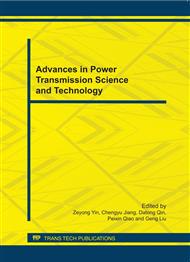p.867
p.871
p.875
p.879
p.883
p.889
p.893
p.898
p.904
Reduction of Power Losses in Transmissions and Gearings
Abstract:
In modern motor vehicles, having a driveline that is optimally designed for each vehicle provides a substantial CO2 reduction. Different transmission systems such as, for example, manual transmissions, torque-converter transmissions, dual clutch transmissions and hybrid systems, work better with different requirements and vehicle classes. By increasing the number of gears and the transmission-ratio spread, the engine can run with more fuel efficiency without a loss of driving dynamics. The transmission efficiency itself can be improved by using fuel efficient transmission oil, optimizing the lubrication systems and pumps, improving shifting strategies and optimizing the friction characteristics of gearings, bearings and seals/gaskets [1].
Info:
Periodical:
Pages:
883-888
Citation:
Online since:
August 2011
Authors:
Keywords:
Price:
Сopyright:
© 2011 Trans Tech Publications Ltd. All Rights Reserved
Share:
Citation:


